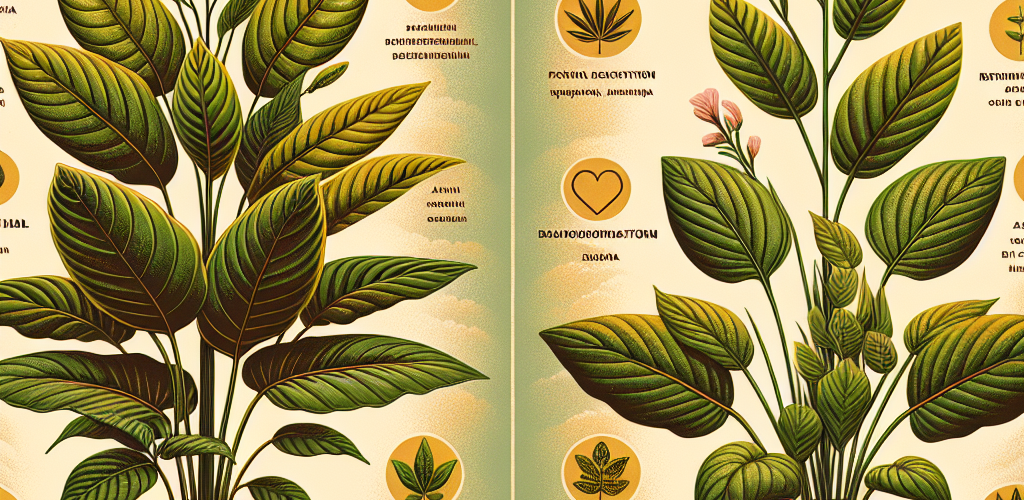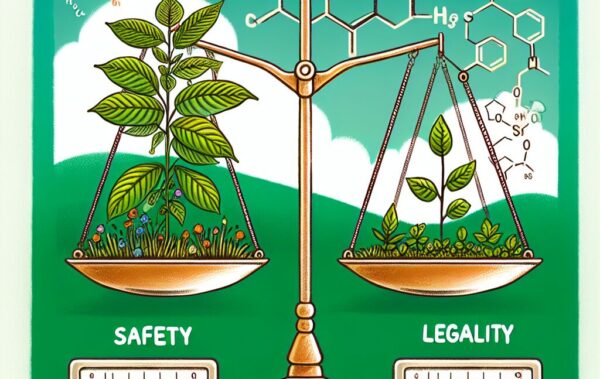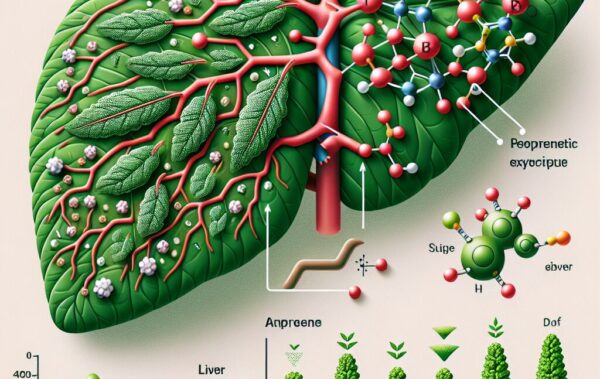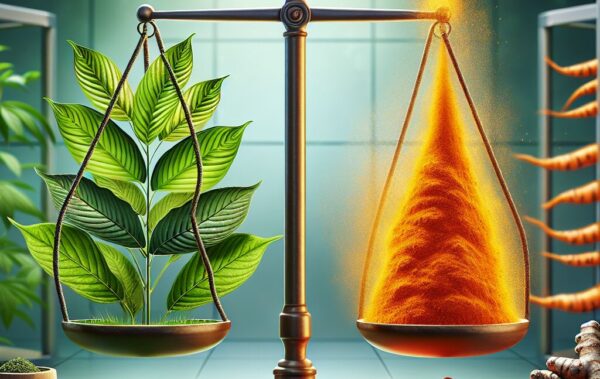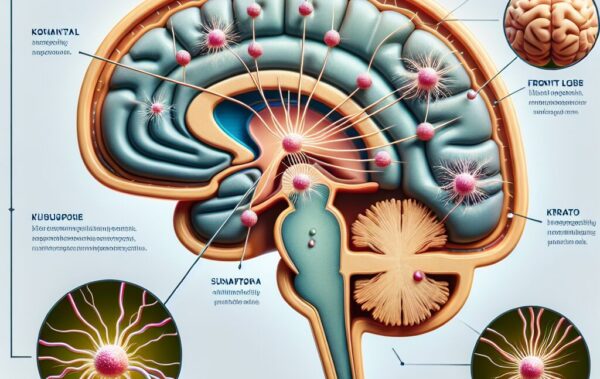- Understanding Kratom: Origins and Effects
- Kava: Cultural Background and Anxiolytic Properties
- Mechanisms of Action: How Kratom and Kava Affect the Mind
- Comparative Analysis: Efficacy in Relaxation and Anxiety Management
- Frequently Asked Questions about Kratom and Kava
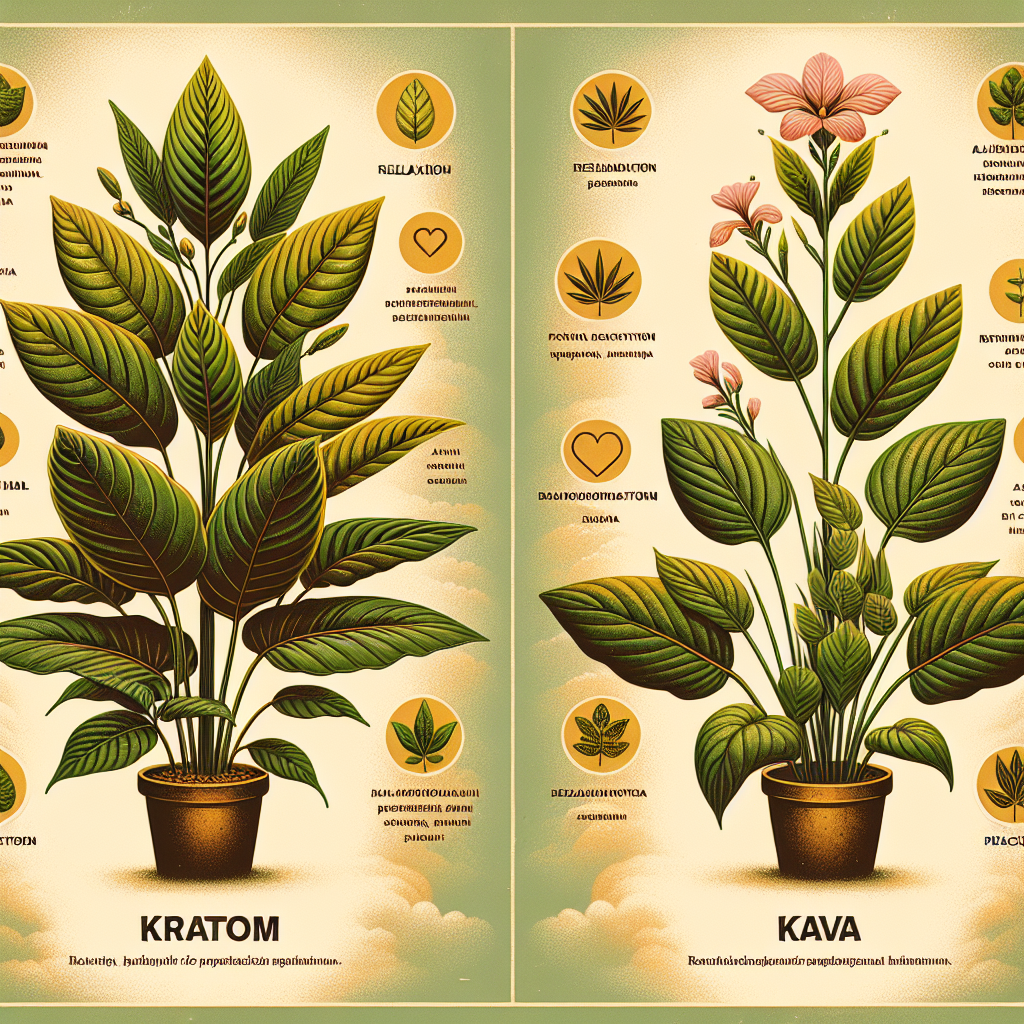 Kratom is a tropical evergreen tree from the coffee family, indigenous to Southeast Asia, where it has been used for centuries as a herbal remedy and in traditional ceremonies. Its leaves contain compounds that can have psychotropic effects, which is why many people today are turning to Kratom for relaxation and anxiety relief, viewing it as one of the herbal alternatives to pharmaceutical options.
Kratom is a tropical evergreen tree from the coffee family, indigenous to Southeast Asia, where it has been used for centuries as a herbal remedy and in traditional ceremonies. Its leaves contain compounds that can have psychotropic effects, which is why many people today are turning to Kratom for relaxation and anxiety relief, viewing it as one of the herbal alternatives to pharmaceutical options.
The primary active ingredients in Kratom leaves are mitragynine and 7-hydroxymitragynine. These compounds interact with opioid receptors in the brain, but it’s worth noting that Kratom does not belong to the opioid family. The effects of Kratom can vary significantly depending on the dosage: at lower doses, it typically produces energy and focus, while higher doses are more likely to be sedating and pain-relieving.
For those new to Kratom, exploring the different strains available can be enlightening as each variant offers distinct effects. For example, Maeng Da is renowned for its strong energizing effects, while strains like Bali or Red Vein Kratom are sought after for their more calming properties.
When considering Kratom for relaxation, one of the most popular forms is the powder, which can be made into a tea, added to beverages, or used in food recipes. A calming cup of Kratom tea in the evening can be a cherished ritual for winding down. Kratom is also available in convenient forms such as capsules and liquid extracts, which are perfect for on-the-go anxiety relief.
It’s crucial to note that while Kratom does have a potential role in relaxation and mood enhancement, its effects can be complex and it may not be suitable for everyone. Different bodies can react differently to its alkaloids, and potential side effects may include nausea, dizziness, or sleep issues, especially with higher or frequent dosing. Therefore, individuals should exercise caution and begin with lower doses while monitoring their reactions closely.
Understanding fully the origins and effects of Kratom is essential for those considering this herb as a means of relaxation and anxiety relief. Its historical use, variance in strains, and dosage-specific outcomes highlight the importance of approaching Kratom with a careful, educated perspective.
By leaning on the wisdom passed down through generations in Southeast Asia and adhering to modern best practices for use, individuals may find a natural ally in Kratom for easing the mind and softening the sharp edges of daily stress. However, given Kratom’s psychoactive nature, respect for its power and proper education about its potential risks and benefits should be foundational guidelines when integrating it into a wellness routine.
Kava: Cultural Background and Anxiolytic Properties
Kava, also known by its scientific name Piper methysticum, is a plant native to the Pacific Islands where it has long been a central part of cultural ceremonies and social events. For centuries, Pacific Islanders have prepared and consumed kava for its calming and anxiolytic effects, which are said to induce a sense of tranquility and relaxation without impairing cognitive ability.
The roots of the kava plant contain kavalactones, the key active ingredients thought to produce its psychoactive properties. These compounds are extracted by grinding the kava root and mixing it with water, traditionally by hand, to create a beverage. The resulting drink has a somewhat earthy and peppery taste, which can be an acquired preference for those new to kava. Today, kava is available globally as a dietary supplement in various forms, including powders, tinctures, and capsules.
When it comes to anxiety relief and relaxation, kava has been hailed in the wellness community for its potential to ease the mind without the risk of dependency associated with some pharmaceutical alternatives. It is often considered among the herbal alternatives for those seeking natural solutions to manage stress and anxiety.
The anxiolytic properties of kava are due to the way kavalactones interact with the central nervous system, particularly influencing neurotransmitters responsible for mood regulation. Unlike some sedatives that may cause drowsiness or impair motor skills, kava is often chosen for its ability to relax the user while still allowing them to engage socially and remain alert.
However, it’s important to proceed with caution when considering kava, as improper use or excessive intake can lead to health issues, including a risk of liver toxicity. Authorities in some countries have issued advisories on kava, signaling the need for careful consumption. Those interested in trying kava should consult with a healthcare professional, especially if they are taking other medications or have existing health concerns.
For those who are curious to experience the effects of kava, it is advisable to source it from reputable vendors to ensure the product’s purity and authenticity. The popularity of kava has grown in recent years, and it can be found in specialized kava bars as well as online.
In summary, kava holds a prestigious spot in the tapestry of traditional Pacific Island culture. Its long-standing use for promoting a calm and relaxed state of mind showcases its potential as an herbal alternative for anxiety relief. As with any herbal substance, the key is to respect its potency, understand its effects, and use it responsibly to enjoy the ceremonial relaxation it has provided across generations.
Mechanisms of Action: How Kratom and Kava Affect the Mind
Kratom and kava have unique ways of interacting with the brain, each influencing the user’s mental state differently. To better understand these interactions, we will delve into the mechanisms of action of both substances.
Starting with Kratom, its primary alkaloids, mitragynine, and 7-hydroxymitragynine affect the mind by binding to opioid receptors, particularly the mu and delta receptors. While Kratom is not an opioid, its interaction with these receptors can induce effects similar to those produced by opioid substances, including pain relief, euphoria, and sedation which contribute to its potential for relaxation and anxiety relief. However, unlike traditional opioids, the affinity of Kratom’s alkaloids for these receptors is less pronounced, which is believed to be why Kratom is associated with a lower risk of dependency, although the risk is not entirely absent.
Since Kratom can impact neurotransmitters like dopamine and serotonin, it can influence mood and perception. For some, this results in relaxation and an uplifted mood, while others may find it provides enough energy and focus to tackle stressful tasks without becoming overwhelmed. However, because of its complex pharmacology, the response to Kratom can vary widely among individuals.
Kava, on the other hand, acts on the brain through a different set of mechanisms. Instead of interacting with opioid receptors, kavalactones from kava modulate the activity of GABA (gamma-aminobutyric acid) receptors in the brain. GABA is an inhibitory neurotransmitter, meaning it helps to balance and reduce neuronal activity, leading to calming effects on the central nervous system. This action is thought to underlie kava’s efficacy in promoting relaxation and reducing anxiety without impairing cognitive function—something highly valued among users who seek herbal alternatives for managing stress and anxiety.
The kavalactones in kava are also involved in regulating other neurotransmitters and modulators, including dopamine and noradrenaline, contributing to its overall effects. The balancing act of these chemical messengers can help soothe the tension and create a relaxed state that is both physically and mentally noticeable.
Notably, while both Kratom and kava have properties that can mitigate symptoms of stress and anxiety, their mechanisms of action in the brain differ significantly. This divergence can have implications when choosing either Kratom or kava for anxiety relief, as individual neurochemistry and personal health conditions may align better with one substance over the other.
While both plants offer potential benefits for relaxation and anxiety relief, they also come with their respective cautions and considerations for safe use. It is always recommended to consult with a healthcare professional before integrating either substance into your wellness regimen, particularly since both Kratom and kava can interact with other medications and have contraindications for certain individuals.
If you’re interested in trying Kratom, be sure to explore a variety of strains to discover which might suit your needs best. Whether you’re curious about Red Vein Kratom’s relaxing properties or another type’s mood-enhancing effects, it’s wise to begin with smaller doses to understand how your body responds before gradually adjusting as necessary. And for those pursuing the calming traits of kava, ensure the quality and purity of the product by choosing a reliable source.
In summary, Kratom and kava’s unique mechanisms of action in the brain are what make them appealing as herbal alternatives for relaxation and anxiety relief. But keep in mind, the individual experience can vary greatly, and responsible use with proper dosages is key to enjoying the benefits safely.
Comparative Analysis: Efficacy in Relaxation and Anxiety Management
 Embarking on an exploration of Kratom and kava’s effectiveness for relaxation and anxiety management, it’s essential to weigh both subjective experiences and scientific insights. Despite their unique mechanisms of action, individuals frequently turn to these herbal alternatives as remedies for life’s stressors due to their perceived therapeutic benefits.
Embarking on an exploration of Kratom and kava’s effectiveness for relaxation and anxiety management, it’s essential to weigh both subjective experiences and scientific insights. Despite their unique mechanisms of action, individuals frequently turn to these herbal alternatives as remedies for life’s stressors due to their perceived therapeutic benefits.
When it comes to performance in delivering relaxation and anxiety relief, it’s interesting to note that the experiences with Kratom and kava often differ based on the user’s biology, the context of use, and the dosages consumed. Kratom is renowned for its dual-sided effects—with low doses potentially providing an energizing uplift and higher dosages leaning towards sedation. This can be particularly advantageous for those seeking to modulate their level of relaxation with precision. Should someone require merely a gentle nudge towards calmness without drowsiness, a lower dose of certain Kratom strains could be ideal.
Certain Kratom strains, such as Bali and Indo Kratom, are often reputed for their soothing qualities. However, individuals new to Kratom should consider starting with smaller doses and only gradually increasing the amount taken, as individual reactions can significantly vary.
Kava, meanwhile, shines in its consistent delivery of tranquility without significantly affecting mental clarity. Its action on the GABA system in the brain results in gentle waves of calm washing over the user, often described as akin to the relaxed state after a good massage. For those dealing with social anxiety or needing to stay engaged and alert while managing stress, kava could serve as the ideal candidate.
Despite these positive attributes, both Kratom and kava have been subject to scrutiny about their safety profiles. While less risk of dependency is linked to these substances when compared to traditional pharmaceuticals, they are not without potential side effects or health concerns. For example, high doses of Kratom may lead to adverse effects like nausea or dizziness, and kava has been connected to liver health concerns, though such occurrences are usually associated with excessive or improper use.
When considering these herbal remedies, individuals should place importance on sourcing high-quality products, as this can have a direct impact on their safety and efficacy. For kava, this means looking for noble strains that are known for their safety and therapeutic effects. In the case of Kratom, purchasing from reputable vendors who perform rigorous testing is key. For those interested in a variety of Kratom presentations, whether powders, capsules, or liquid extracts, being able to trust the source ensures a better experience. You might find something that suits your needs in the Kratom shop or explore specific categories such as Kratom shots or edibles.
In summary, both Kratom and kava can offer significant anxiety relief and relaxation benefits. The choice between them may come down to the type of experience one is seeking—whether it’s the flexible stimulation-to-relaxation spectrum of Kratom or the clear-headed calm offered by kava. Always remembering that moderation is key, and guidance from health professionals is highly advisable to navigate these waters safely.
Frequently Asked Questions about Kratom and Kava
Navigating the world of herbal remedies can often lead to many questions, especially when considering options like Kratom and Kava for relaxation and anxiety relief. The following are some of the frequently asked questions to help clarify any uncertainties and provide deeper insights into these popular herbal alternatives.
- What are the recommended dosages for Kratom and Kava?
- Can I use Kratom and Kava together?
- Are there any legal considerations I should be aware of regarding Kratom and Kava?
- Where can I buy high-quality Kratom and Kava?
- What are the possible side effects of using Kratom and Kava for anxiety relief?
- How long does it take for Kratom and Kava to work?
- Can Kratom and Kava be used for long-term anxiety management?
- Can I develop a dependency on Kratom or Kava?
The dosage for Kratom or Kava can vary based on individual sensitivity, body weight, and desired effects. For Kratom, it is generally advised to start with a low dose of 1-2 grams and gradually increase as needed while monitoring your body’s response. Kava dosages depend on the concentration of kavalactones in the product, but a common starting point is a single serving as per the manufacturer’s recommendations.
Combining Kratom and Kava is not typically recommended due to the potential for increased sedation and the risk of side effects. If you’re considering using both, it’s crucial to consult with a healthcare provider to assess any risks specific to your health profile.
The legal status of Kratom and Kava varies by region. In the United States, Kratom is legal on a federal level but banned or regulated in some states and cities. Kava is legal in the U.S. and most countries, though some have restrictions or quality standards in place. Always verify the current legal status in your area before purchasing.
For quality and safety, purchase Kratom and Kava from reputable sources known for testing their products for purity and potency. A trusted Kratom shop may also offer a variety of high-quality Kava products.
Kratom use can lead to side effects such as nausea, dizziness, or constipation, particularly with frequent or high dosages. Kava may cause sedation, digestive upset, or—rarely—liver toxicity, especially if taken in high doses or for extended periods. As with any supplement, moderation and heeding recommended dosages are important to minimize risks.
Effects of Kratom may be felt within 20-40 minutes after consumption, peaking at around 1-2 hours and lasting up to 6 hours depending on the dose. Kava effects can begin within 15-30 minutes and may last several hours, again depending on the dose and individual metabolism.
While some find that Kratom and Kava provide relief for their anxiety symptoms, long-term use is not typically recommended due to potential tolerance, dependency, or health risks. It’s best to use these herbs as part of a broader approach to anxiety management that includes lifestyle changes and possibly therapy.
Kratom has a potential for dependency, especially with daily or heavy use. Kava is generally considered to have a lower risk of dependency; however, it is still advisable to use any substance with potential psychoactive effects responsibly and in moderation.
For further information, consult with healthcare professionals or reach out to knowledgeable vendors when considering Kratom or Kava as part of your wellness routine. Remember, responsible use is key for the safe and effective incorporation of these herbal alternatives into your life.

